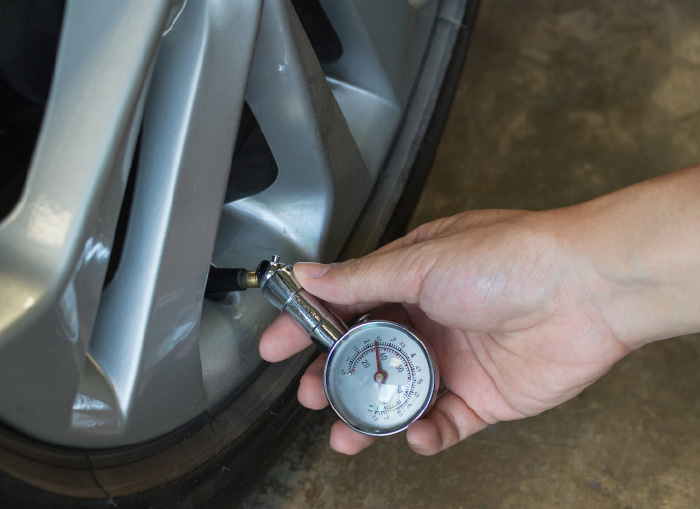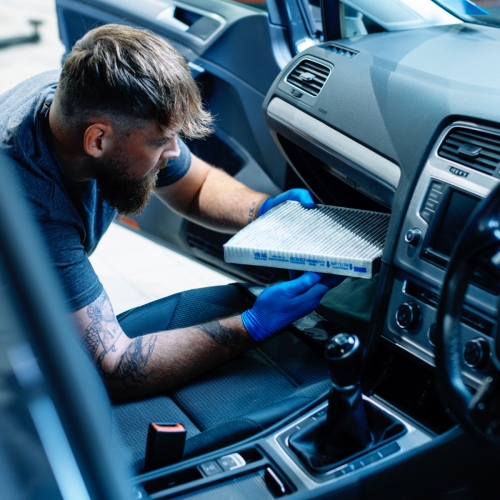By utilising data and expertise from within the Volkswagen Group, we look at the consequences of vehicles being left dormant as a result of a lockdown. With ongoing restrictions, vehicle usage is likely to remain low for a while; the result of people working from home and limiting their journeys. Long periods of inactivity or limited vehicle usage can affect the performance and reliability of a number of vehicle components.
 Batteries
Batteries
Most modern 12V batteries can withstand a few weeks of inactivity, but this depends on various factors including their age, the vehicle’s electrical consumers, and even the weather conditions.
Higher temperatures (like we saw in early August) speed up the chemical reaction inside a battery. The mixture of acid and water generates heat which, combined with gaseous venting, causes the liquid to evaporate. When the fluid level gets too low it can damage the battery’s internal plates.
The rate of discharge is also influenced by the electrical consumers that remain connected, even when the ignition is turned off – systems such as alarms, immobilisers, ECUs and other components.
Short, infrequent journeys take more charge from the battery than the alternator can replace. Starting the engine uses around 5% of a battery’s power, and typically needs a half-hour journey to replace it via the vehicle’s alternator.
Regardless of the cause, leaving a battery’s charge below 80% can lead to permanent damage. A charge level below 12.4V for a long period of time leads to sulphate crystals forming and hardening inside the battery, preventing the chemical reaction required to produce electrical energy.
Another consequence is acid stratification. This is where the battery’s acid becomes much stronger at the bottom of the battery. Testing may still show a high voltage, but the battery will be unable to supply enough current to start the engine.
Top Tips Complete a full battery check to determine its health, regardless of whether it has sufficient charge to start the engine. Testing the reserve capacity is particularly important on EFB and AGM batteries as it indicates whether the battery is strong enough to support the stop-start system.
TPS supply batteries for all makes and models thanks to our Genuine, FourPlus, Yuasa and Quantum product rangesFind out more

 Braking components
Braking components
Issues such as corrosion on the brake discs and calipers seizing up can occur when vehicles have been left standing for long periods.
Minor surface corrosion on the face of the discs can be removed with brake cleaner or simply by applying the brakes. However, a seized caliper or the parking brake failing to release is less straightforward and can cause permanent damage to both pads and discs.
Electronic parking brakes are just as susceptible as cable operated systems, so it’s also worth checking that they’re functioning correctly.
Top Tips Inspect the condition of the brake discs and calipers for excessive corrosion, and test the parking brake. TPS offers a range of Genuine and FourPlus brake kits should replacement be required. Find out more
 Diesel Particulate Filters
Diesel Particulate Filters
Limiting a modern diesel vehicle to very short journeys at low speeds can cause a build-up of soot in the DPF as it won’t have enough time to complete the required regeneration.
The DPF needs to reach a high temperature in order to clear the soot that accumulates. So, the vehicle must be running at the correct temperature and travelling at a constant speed for a period of time for the regeneration to be completed.
If the DPF is unable to regenerate, the soot will build up inside the filter, reducing engine performance and ultimately leading to the vehicle going into limp mode. A dashboard warning light gives advanced notice of an issue but those who haven’t experienced this problem won’t know how to resolve it.
It’s also worth remembering that an engine warning light on the dash is an MoT failure – as is the permanent removal of the DPF to get around the problem.
Top Tips Educate customers on the impact that short journeys can have on their DPF, and what they need to do to facilitate a regeneration. This information is usually in the owner’s handbook.
 Tyres
Tyres
Deformation or ‘flat spots’ are a potential issue on vehicles that have been left stationary for long periods.
The severity of the flat spot comes down to how heavy the car is, the amount of time it’s been left standing, tyre pressure, and the ambient temperature. Tyres will naturally lose pressure during periods of inactivity as the rubber is porous. Older tyres usually suffer more from these issues than newer ones.
Top Tips Check the age of the tyres, pressures and look for any signs of deformation.





